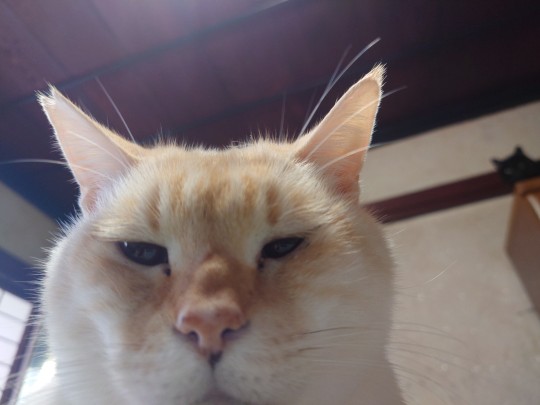bshock or robert | he/him | variety reblogs & absurdly niche original posts
Don't wanna be here? Send us removal request.
Text
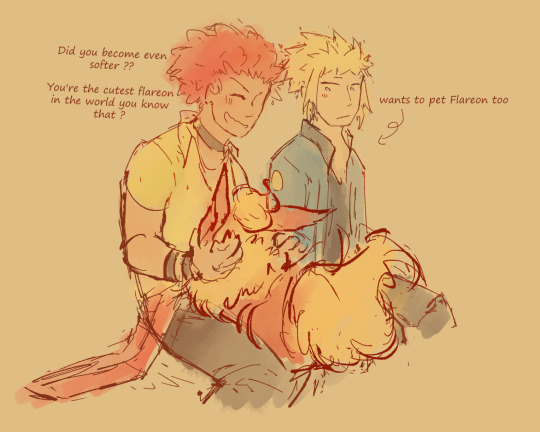


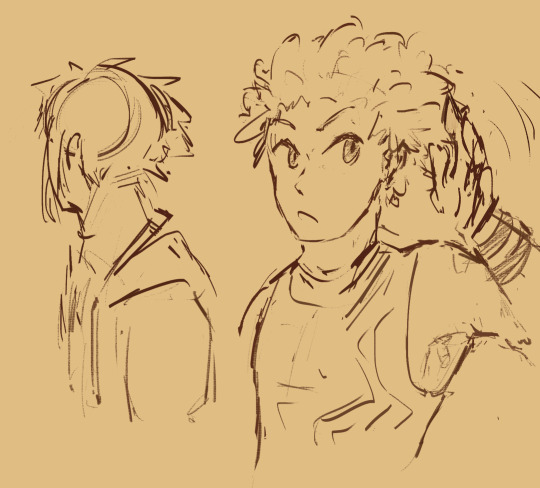

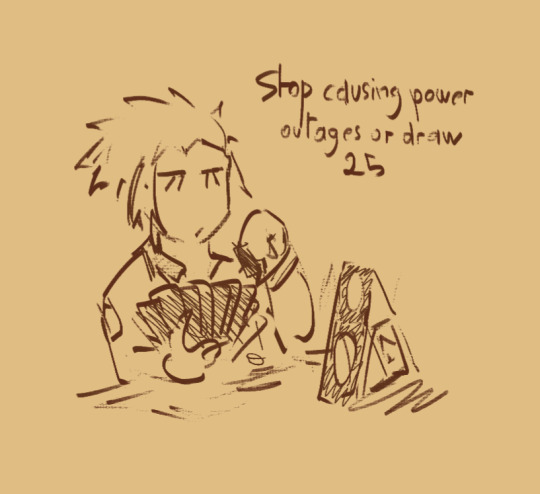
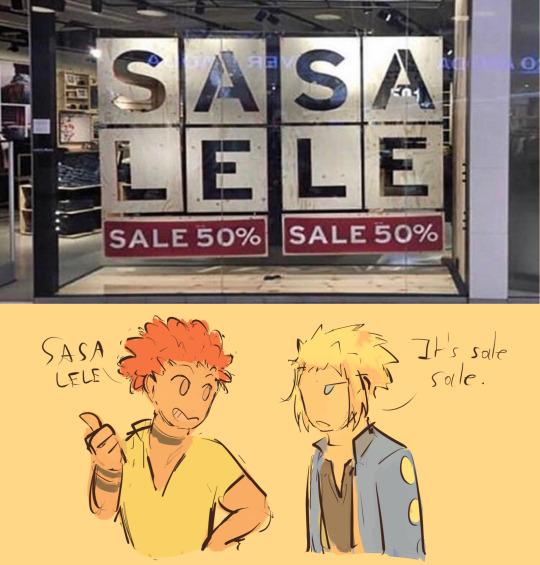
This stuff is 4 months old, I really have to post my art sooner alskskdkdk anyway enjoy some Volkner and Flint content of varying quality
63 notes
·
View notes
Text
people will tell you they hate tofu and think its disgusting and then you ask them how they prepared it and you find out they cooked it in the most disturbingly bland unseasoned way possible. like yeah no shit
5K notes
·
View notes
Text





prolific illustrators Leo & Diane Dillon with their son, Lee, in 1976. The Dillons primarily drew surrealistic & fantasy-themed art (see examples) for numerous book covers, magazines, album covers, and children's books. Leo Dillon was the first African-American winner of the Caldecott Medal for illustrators.
832 notes
·
View notes
Text

In February 2025, the Nintendo Tokyo store has begun selling officially licensed plastic food storage bags with Yoshi designs.
The store featured a whimsical display whereby a single apple was placed in such a bag to illustrate how the design on the bag interacts with the food inside to create the impression of Yoshi licking the food.
Main Blog | Patreon | Twitter | Bluesky | Small Findings | Source: tokyogamelife
788 notes
·
View notes
Text
the overwhelming majority of trans adults currently alive did not have access to gender-affirming surgeries, puberty blockers, and hormones as kids. while we fight for every person, including every child, to have gender affirming care on-demand, it's also important to remember not to paint lack of access to trans care as a death sentence for kids who currently lack other options. inaccessibility of trans care is painful, especially for very young people, but it isn't certain death. together, in community, we can stay alive and fight for a future where we all get what we need.
7K notes
·
View notes
Text
Zoom In, Don’t Glaze Over: How to Describe Appearance Without Losing the Plot
You’ve met her before. The girl with “flowing ebony hair,” “emerald eyes,” and “lips like rose petals.” Or him, with “chiseled jawlines,” “stormy gray eyes,” and “shoulders like a Greek statue.”
We don’t know them.
We’ve just met their tropes.
Describing physical appearance is one of the trickiest — and most overdone — parts of character writing. It’s tempting to reach for shorthand: hair color, eye color, maybe a quick body scan. But if we want a reader to see someone — to feel the charge in the air when they enter a room — we need to stop writing mannequins and start writing people.
So let’s get granular. Here’s how to write physical appearance in a way that’s textured, meaningful, and deeply character-driven.
1. Hair: It’s About Story, Texture, and Care
Hair says a lot — not just about genetics, but about choices. Does your character tame it? Let it run wild? Is it dyed, greying, braided, buzzed, or piled on top of her head in a hurry?
Good hair description considers:
Texture (fine, coiled, wiry, limp, soft)
Context (windblown, sweat-damp, scorched by bleach)
Emotion (does she twist it when nervous? Is he ashamed of losing it?)
Flat: “Her long brown hair framed her face.”
Better: “Her ponytail was too tight, the kind that whispered of control issues and caffeine-fueled 4 a.m. library shifts.”
You don’t need to romanticise it. You need to make it feel real.
2. Eyes: Less Color, More Connection
We get it: her eyes are violet. Cool. But that doesn’t tell us much.
Instead of focusing solely on eye color, think about:
What the eyes do (do they dart, linger, harden?)
What others feel under them (seen, judged, safe?)
The surrounding features (dark circles, crow’s feet, smudged mascara)
Flat: “His piercing blue eyes locked on hers.”
Better: “His gaze was the kind that looked through you — like it had already weighed your worth and moved on.”
You’re not describing a passport photo. You’re describing what it feels like to be seen by them.
3. Facial Features: Use Contrast and Texture
Faces are not symmetrical ovals with random features. They’re full of tension, softness, age, emotion, and life.
Things to look for:
Asymmetry and character (a crooked nose, a scar)
Expression patterns (smiling without the eyes, habitual frowns)
Evidence of lifestyle (laugh lines, sun spots, stress acne)
Flat: “She had a delicate face.”
Better: “There was something unfinished about her face — as if her cheekbones hadn’t quite agreed on where to settle, and her mouth always seemed on the verge of disagreement.”
Let the face be a map of experience.
4. Bodies: Movement > Measurement
Forget dress sizes and six packs. Think about how bodies occupy space. How do they move? What are they hiding or showing? How do they wear their clothes — or how do the clothes wear them?
Ask:
What do others notice first? (a presence, a posture, a sound?)
How does their body express emotion? (do they go rigid, fold inwards, puff up?)
Flat: “He was tall and muscular.”
Better: “He had the kind of height that made ceilings nervous — but he moved like he was trying not to take up too much space.”
Describing someone’s body isn’t about cataloguing. It’s about showing how they exist in the world.
5. Let Emotion Tint the Lens
Who’s doing the describing? A lover? An enemy? A tired narrator? The emotional lens will shape what’s noticed and how it’s described.
In love: The chipped tooth becomes charming.
In rivalry: The smirk becomes smug.
In mourning: The face becomes blurred with memory.
Same person. Different lens. Different description.
6. Specificity is Your Superpower
Generic description = generic character. One well-chosen detail creates intimacy. Let us feel the scratch of their scarf, the clink of her earrings, the smudge of ink on their fingertips.
Examples:
“He had a habit of adjusting his collar when he lied — always clockwise, always twice.”
“Her nail polish was always chipped, but never accidentally.”
Make the reader feel like they’re the only one close enough to notice.
Describing appearance isn’t just about what your character looks like. It’s about what their appearance says — about how they move through the world, how others see them, and how they see themselves.
Zoom in on the details that matter. Skip the clichés. Let each description carry weight, story, and emotion. Because you’re not building paper dolls. You’re building people.
9K notes
·
View notes
Text
Beyond providing something to cite, the other benefit of doing "water is wet" type studies is that, like, it's not impossible for people to be reductive about their own experiences. I can think of any number of situations where "everybody knows" that all members of group A experience B, and plenty of members of group A will themselves tell you this is obviously the case, but then somebody actually does the work and it turns out to be substantially more complicated than that.
2K notes
·
View notes
Text

Nature + Fiddler
This month's (June) exclusive sticker club artwork. There are a few slots still open!
20K notes
·
View notes
Text


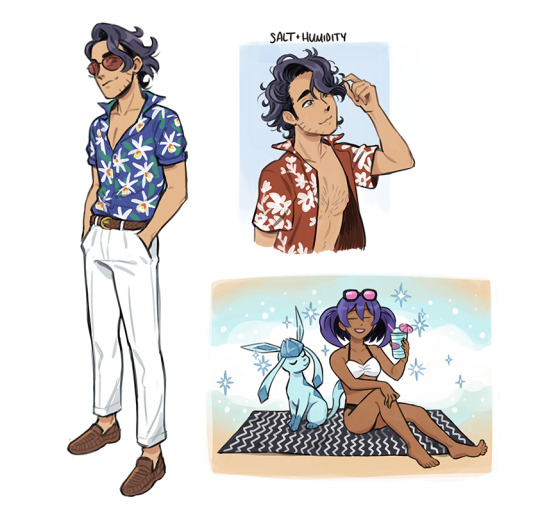
Back with some round brush sketches just in time for people to start asking if I'm still alive [finger guns emoji]
1K notes
·
View notes
Text
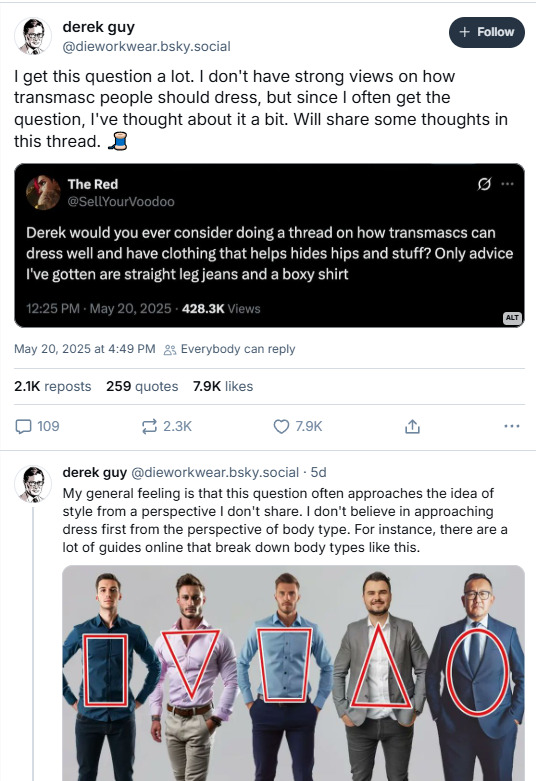
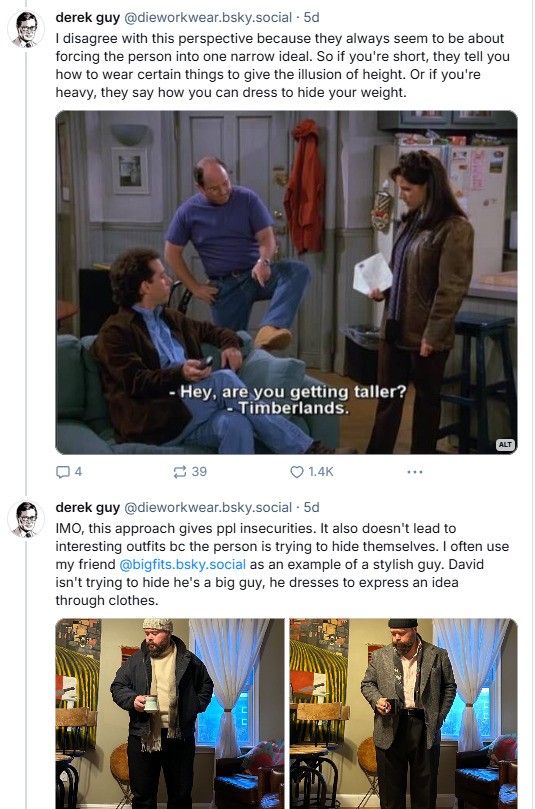
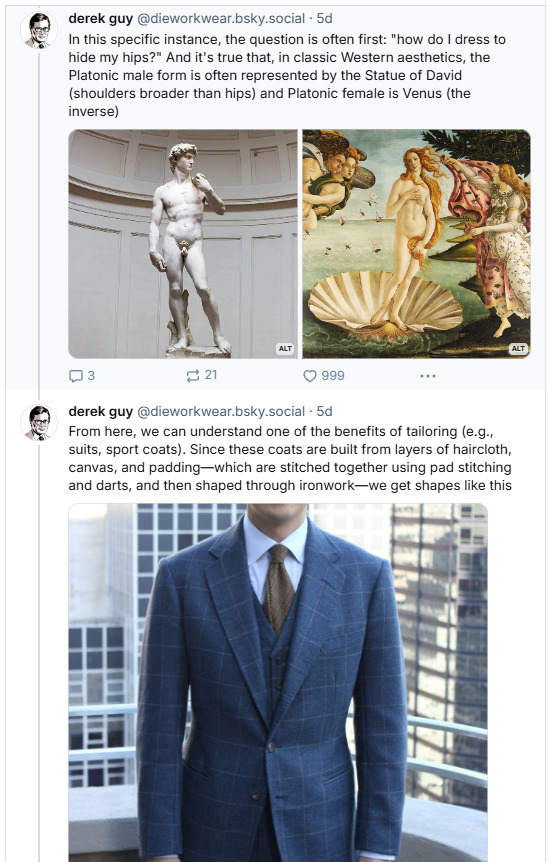
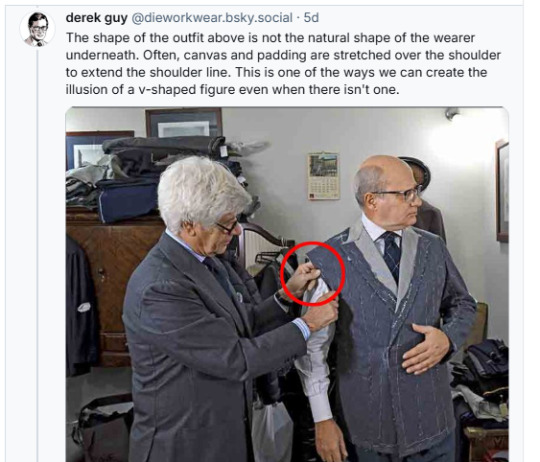
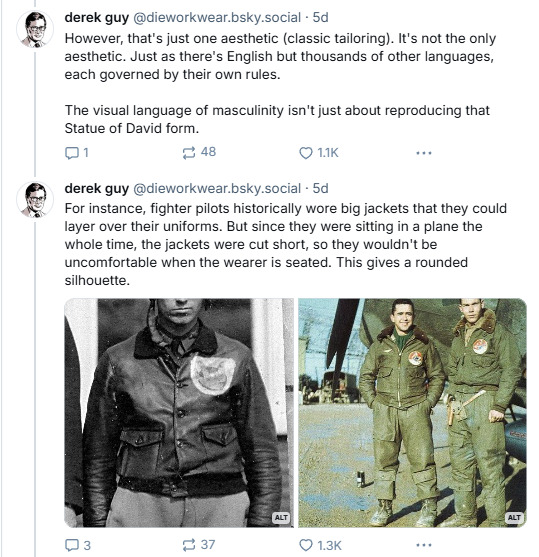
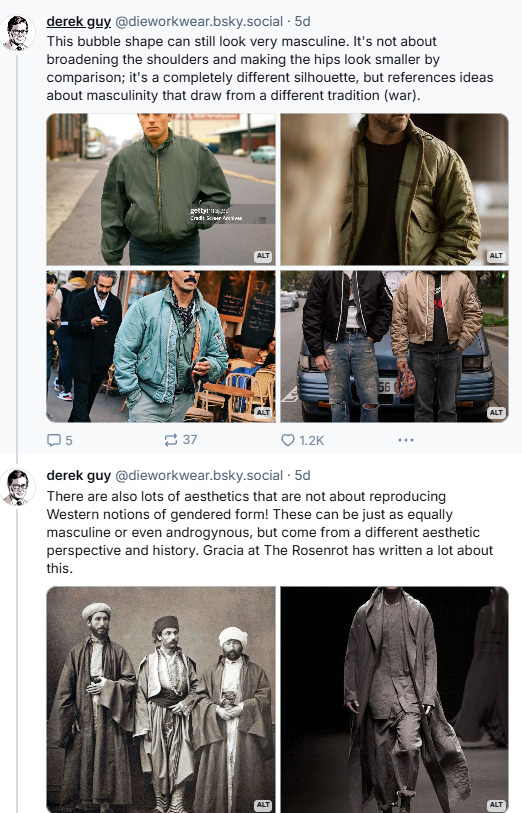
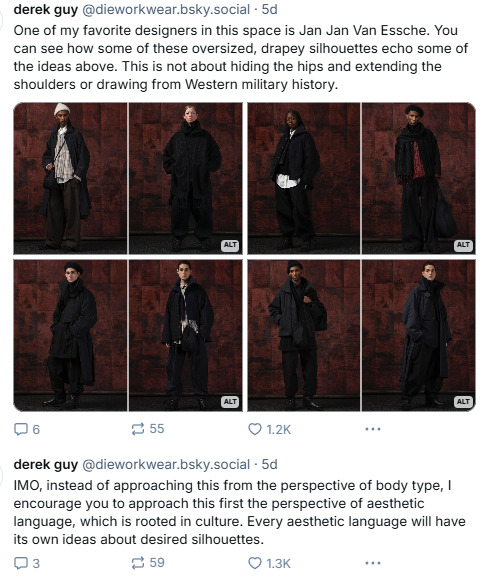
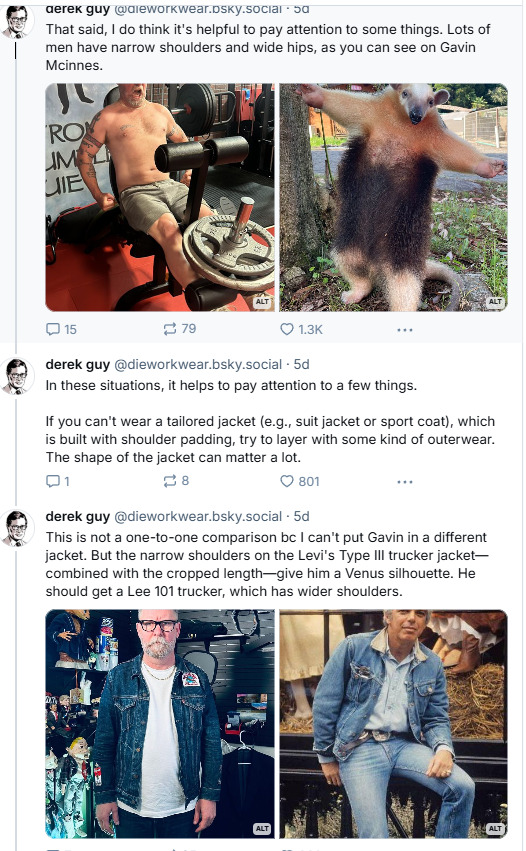
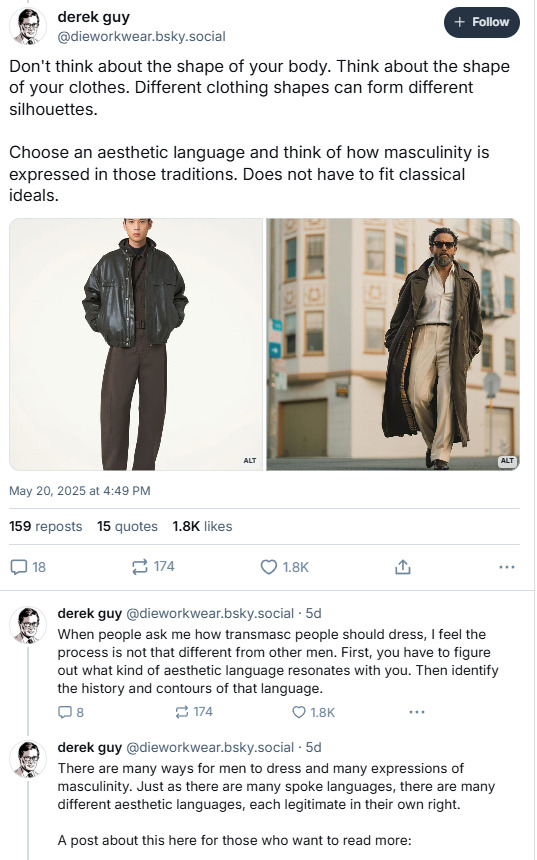
https://dieworkwear.com/2022/08/26/how-to-develop-good-taste-pt-1/
From the comments "In my experience clothing on anyone looks best when it is done with confidence. We are all different shapes and sizes. I was really struck by your post on dressing well that included John Goodman in a faded t-shirt and jeans. He rocks it!"
Excellent advice, whatever gender or style one is looking for. Thank you
I'm a trans guy and Derek, I can tell you my wardrobe has improved a huge amount simply by reading your threads. The "dress for your body type" stuff never worked well for me; your threads about putting together an intentional look and for getting a good fit - that's 99% of the game.
24K notes
·
View notes
Text
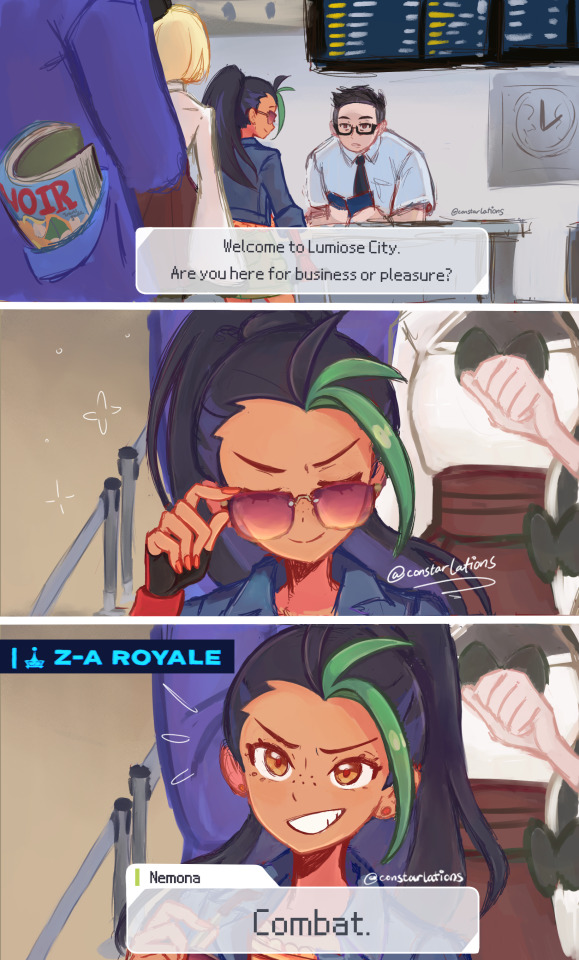
Nemona, 0.1 seconds upon finding out about the Z-A Battle Royale
5K notes
·
View notes
Text
United Healthcare getting sued by its investors, because it didn't warn them that the CEO getting murdered (by the tendrils of their unmitigated greed) was going to lead to them approving more claims (for covered services that they had no right to deny) is a cartoonish example of exactly why their CEO got murdered.
Their argument is essentially "You promised us a specific profit margin that is not possible to achieve under this increased public scrutiny of your unethical practices. We only agreed to invest because of those unethical practices. So we demand compensation because you didn't warn us that you'd be behaving more ethically"
And idk. Satire isn't just dead. We've pissed on its corpse and now it's dissolving in lye.
25K notes
·
View notes
Text

is art i draw am excited for everyone to play deltarune!!
20K notes
·
View notes
Text
Saying that a certain group of people is too privileged to complain about the way that things are is its own sort of defense of the status quo
33K notes
·
View notes

